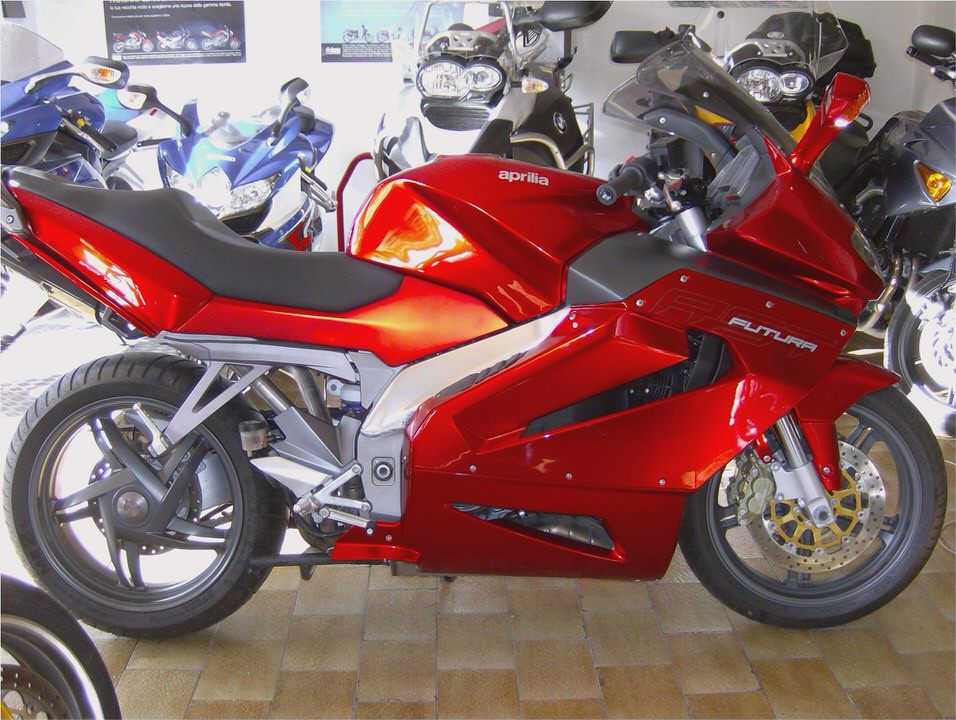
Sport-Tourer Comparison– Aprilia RST1000 Futura vs. BMW R1150RS vs.Ducati ST4s ABS vs. Honda VFR800 ABS vs.Triumph Sprint ST–The Flexible Five
Sport-Tourer Comparison– Aprilia RST1000 Futura vs. BMW R1150RS vs.Ducati ST4s ABS vs. Honda VFR800 ABS vs.Triumph Sprint ST–The Flexible Five
It’s a tricky gig, building a sport-touring bike. On the one hand you’ve got to design in enough “sport” to keep the fun factor high. But on the other hand, the bike needs comfort and amenities to satisfy the “tour” part of the equation.
We gathered five sport-tourers and went for a two-day, 600-mile flog–and then some–to find which bike best combined the two halves into a perfect whole.
This eclectic mix of bikes runs the gamut from an almost-new Japanese liquid-cooled V4 to an old German air/oil-cooled twin, with practically everything in between. The Aprilia RST1000 Futura, one of the Italian company’s successful Mille 60-degree V-twin spinoffs, has been unchanged for several years and was the focus of our insane staff tour in 2001 (”Four States, Three Days,” December ‘01). BMW’s R1150RS was the first boxer to receive the updated R259 oilhead engine 10 years ago, and has been steadily tweaked since then with bigger jugs, lighter wheels and brakes, and improved ABS and servo-assisted linked brakes.
The ST4s gets its 996cc motor from the sporty side of Ducati’s lineup, and has steadily evolved since its 1999 introduction as the 916cc ST4. New this year are an improved seat, new electronics and instruments and a reshaped fairing. Honda’s VFR800 Interceptor moved definitively into this category with its ‘02 redesign (”Red Techno-Buff,” April ‘02).
And the Triumph Sprint ST triple–upgraded in ‘02 with the die-cast engine common to the Speed Triple and 955i–was the winner of our last sport-touring test, way back in ‘00 (”The Centerstand Quartet,” Feb. ‘00). All these stories, as well as a few extra tidbits, are online at www.sportrider.com/0502.
Tour
Nothing better than getting the tour portion of the test out of the way as quickly as possible, so the opening part of our journey took place on California’s Interstate 5–hot and hilly as it winds its way over the Grapevine north of Los Angeles. Marc Cook, quick to complain at the best of times, found the Futura a comfortable ride for this portion, citing decent wind protection with only a bit of turbulence, great ergos and a nicely shaped saddle (er…the bike’s, not his own) as pluses. While you’d think the dual-counterbalanced engine would be silky smooth, it’s one of the busiest-feeling of the five on the freeway.
We all thought Kunitsugu drew the short straw being “saddled” with the BMW for the beginning leg of the trip, but Kento said otherwise at the first stop. The R1150’s upright riding position and wide, flat seat are plenty comfortable for a long spell on the road. As long as you keep the revs low–easy to do with the tall sixth gear–the engine is smooth enough; venture above 70 mph, though, and the buzzing in the bar and pegs begins.
With the RS’s adjustable windscreen you can dial in a comfortable amount of wind protection for your torso and helmet, but the screen’s narrowness leaves your shoulders out in the breeze.
While the BMW is maxing out at 80 mph, the ST4s is just getting started. Its insanely tall gearing has the engine loafing along at freeway speeds, and sixth gear is only good for blatantly illegal speeds–probably why Steve Mikolas (back in the fold after being ostracized for a short period) didn’t even mention the gearing at the first stop. The mild thrumming of the 90-degree twin seems sewing-machine smooth after the BMW, and this year’s new seat is comfortable for about an hour.
Much more than that, however, and the seat’s crowned shape, combined with stiff suspension and ergos at the sporty end of this group, will have you squirming.
Ad-guy Marc Santarpio from Boston thought the VFR’s engine was plenty smooth for his highway jaunt, but felt the riding position was a bit cramped–as you’d expect for a big guy on the sportiest bike here. Wind protection is good, and the seat–while not as plank-hard as recent CBR examples–is the least plush of the five.
As keeper of the map and organizer of the trip, yours truly ended up on the most comfortable bike for a longish haul–the Sprint ST. The combination of almost perfect ergos for touring, a nicely shaped seat, softly sprung suspension and that velvet-smooth 955cc engine make the Triumph capable of daylong trips with ease.
The reach to the bars is a bit far for shorter riders, which can force you to the harder front portion of the seat at times, and freeway expansion joints are felt more than on the other bikes courtesy of the damping-rod fork. Otherwise, there’s not much to complain about on the highway.
Sport
With the droning part of the trip out of the way, the fun–and the ego jousting–began. While at every stop our group raved or bashed certain characteristics of the bikes, oddly enough nothing much was mentioned about the Aprilia. Flying under the radar, the Futura really does nothing wrong as a sporty bike.
The engine is plenty peppy enough and has a flat torque spread, as you’d expect with its Mille heritage. Off/on throttle response is acceptably smooth, and the chassis and suspension remain composed. The brakes, plain old Brembos, are the best of this bunch. Nonetheless, just when you forget the Aprilia is a sport-tourer and try to make it behave like a sportbike, the Metzeler MEZ4s and the centerstand remind you in a hurry.
At aggressive lean angles the tires are slippery and tend to let the bike fall in the last little bit; force the issue and the centerstand digs in abruptly (though only our, um, heavier testers complained about this–really, we’ve got to stop using these ex-Motorcyclist staffers).
Switch from the Futura to the BMW and you’re in for a shock. The RS needs to be kept on the boil to make time, and hand in hand with that higher rpm is a hammering vibration. Other aspects of the BMW don’t so much hurt performance as they are unsettling: The Telelever front end, while having good wheel control over bumps and some built-in anti-dive effect, offers little feedback under braking.
The linked and assisted brakes are plenty powerful, but again, they have little feel and no progression. And the rubber-mounted handlebar adds to the front end’s vagueness, especially over bumpy pavement. Still, nothing dragged, the boxer twin motor comes off corners surprisingly well and a careful rider will by no means get left behind on the BMW.
With its superbike background, you’d expect the Ducati to shine when the road gets twisty; however, details in the execution leave the package a bit short in this company. The engine is quite smooth and easily the most powerful of the group, but the tall gearing and very abrupt throttle response make it difficult to harness that steam. The suspension, with a top-shelf Showa fork and an hlins shock, is quite stiff, and the brakes, though plenty strong, lack feel and progression.
While the ST4s undoubtedly has the most potential, our particular test unit had badly vibrating brakes (unlike another example we tried, on which the brakes didn’t shudder but had much less stopping power), and was delivered with a severely worn (and square) rear tire, which showed cord at the end of our trip. Why Ducati chose to fit such a quick-wearing 180-sized sport tire to the heavy, powerful ST4s, we’re not sure.
The Interceptor could be considered the overdog in this arena, as it’s more sport-oriented, and for the most part that is the case. The chassis and handling are outstanding, with compliant yet sportingly stiff suspension, linear and reasonably light steering and great stability. Heavy riders will regularly touch down the footpeg feelers; push hard and the exhaust pipe will soon spark also.
The linked ABS brakes require a bit of acclimation because the front end dives slightly when you apply just the rear brake, and the front brake lever sits way too high and can’t be angled down. But the big letdown is the VTEC engine, which is lethargic and uninspiring in this company. Even above 7000 rpm with all 16 valves flailing away there’s just not enough jam to move the Honda’s heft (and surprise!
It’s the heaviest in this group) at a rapid pace.
The Triumph received just the opposite comments from our testers–a fantastic engine let down by a so-so chassis. The Sprint’s three-cylinder mill has a great power spread, with good throttle response (though the twistgrip’s throw is a bit long) and a silky smoothness right to redline. The brakes have adequate stopping power, but the lever has an unsettlingly long movement before anything happens.
Steering is neutral and reasonably light, and on smooth roads the Trumpet’s chassis is quite controlled. There’s even decent clearance, with only the peg feelers grinding when the pace heats up. But hit some bumps or be abrupt with the throttle or brake and the flaccid front fork will have the bike pitching about like the Minnow on a three-hour tour.
Lighter riders will have an easier time, but the bike is too softly sprung for heavier riders to be aggressive.
Back At The Office
With the votes tallied and the opinions in, it’s the Aprilia that comes out on top here. The remaining bikes are let down by details that shouldn’t even be an issue considering what each bike costs. The BMW has an excuse because it’s definitely the touring bike of the group.
Still, the brakes could be better sorted, and more steam wouldn’t hurt. The Ducati, for all its top-notch equipment, should be an easy winner but is hampered by its brakes, unsorted handling and rattly, inconsistent clutch. The Honda needs more torque for serious sport-touring, and the Triumph needs better suspension and brakes.
The Aprilia is ranked at the top not so much because of anything particularly outstanding, but rather because it handles both sport and touring duties with equal ease and no fanfare. In other words, this class is open territory for a comfortable, capable bike with nice bags and no gadgets offered at a decent price.
Performance Numbers
Suspension Settings
Aprilia RST1000 Futura
FRONT:
Spring preload: 3 lines showing
Rebound damping: 1 turn out from full stiff
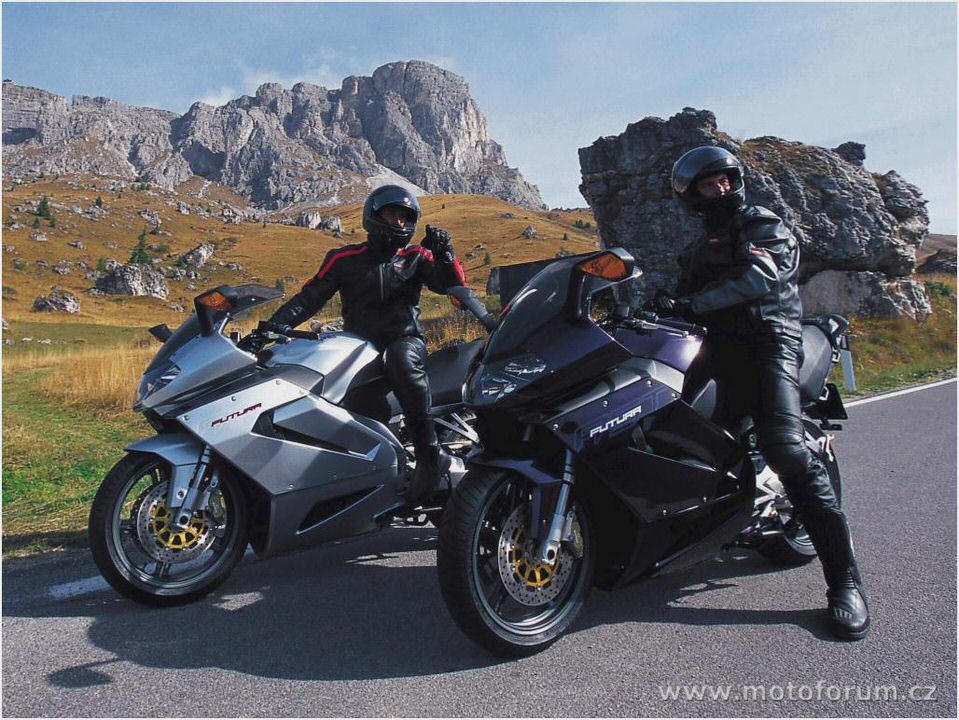
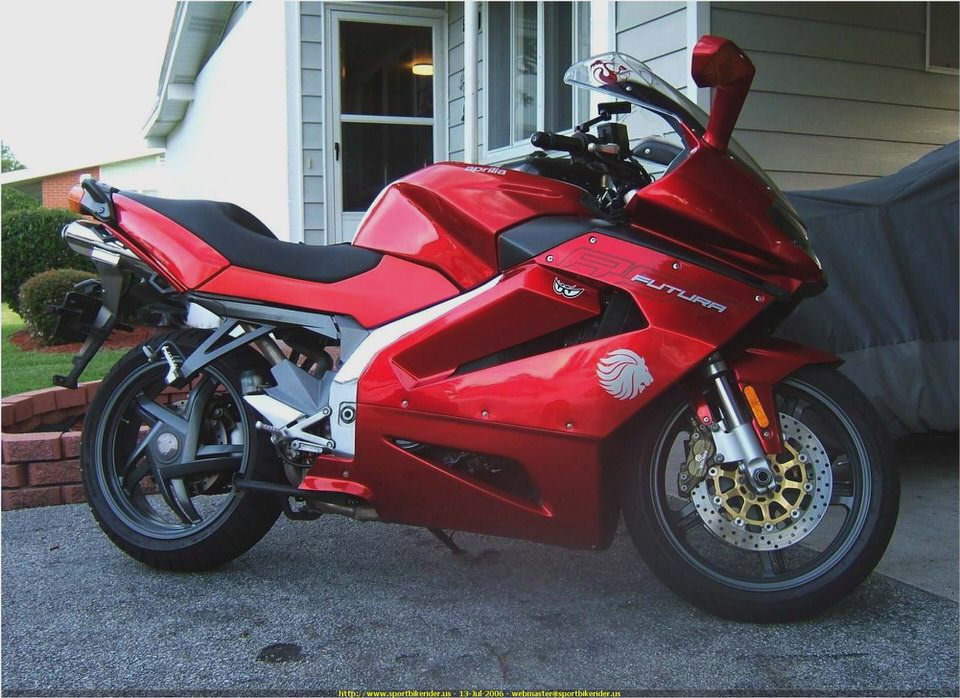
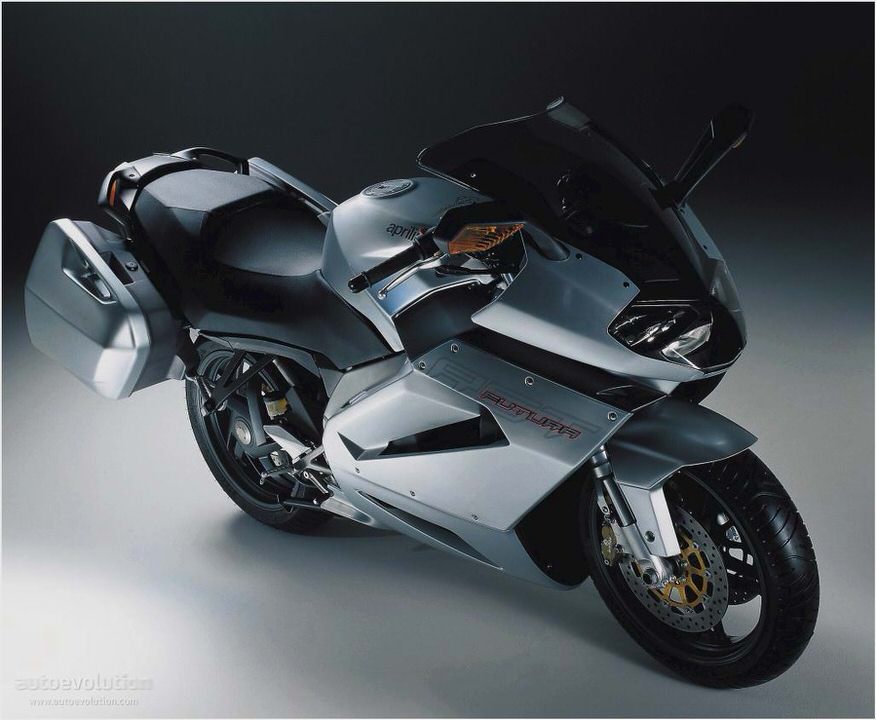
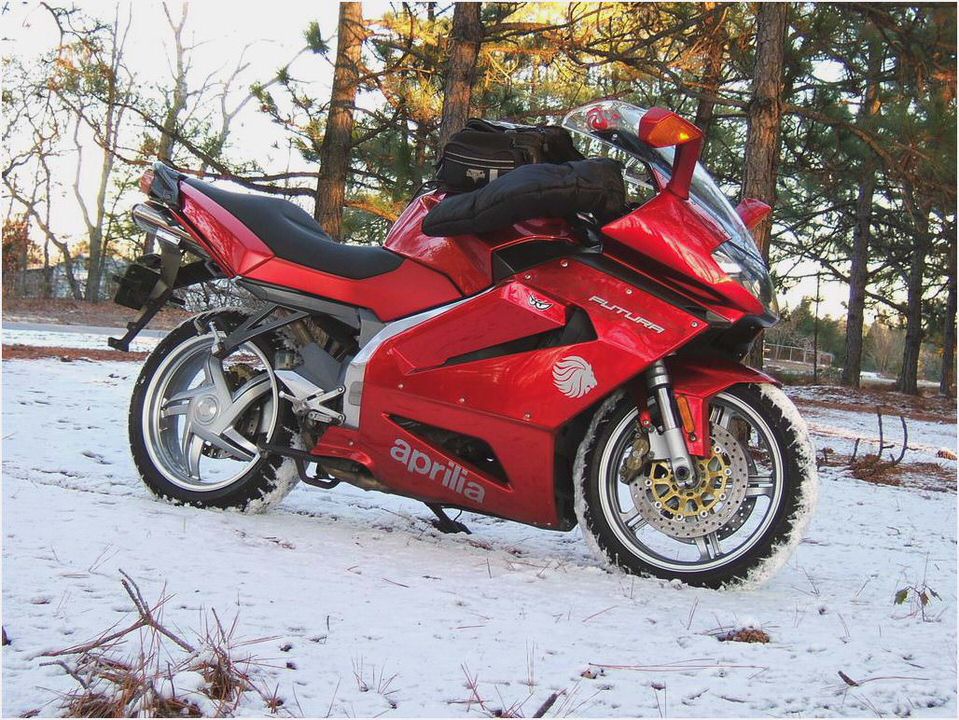
- 2011 Aprilia RSV4 Factory APRC Special Edition – More Than Just…
- 2009 Aprilia Tuono 1000 R / R Factory
- Aprilia RSV MotoGP Replica – World of QB Carbon – Carbon Fibre for Motorcycles
- Aprilia RSV FACTORY NERA, 2004 The RSV 1000 R Nera is the fi…
- Aprilia Sportcity 50 – Scootersales.com.au News

